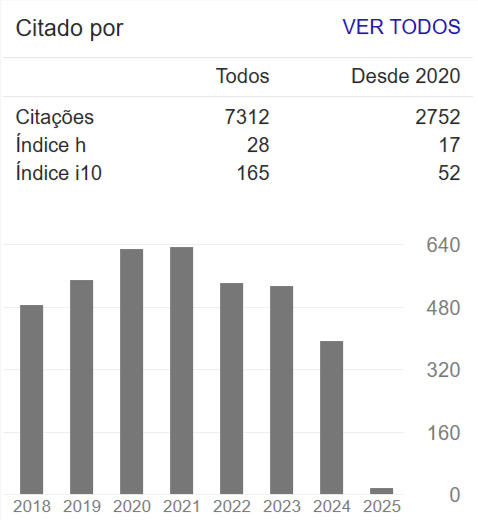Accounting balance of water resources: the situation of the hydrographic regions of Brazil
Abstract
The objective of the research is to demonstrate, through the Balance Sheet of Water Resources, the situation on the consumption of water resources in the Hydrographic Regions of Brazil. This study is justified by the relevance of the information generated by the Accounting that will contribute to the decision-making of water resources managers, the importance of how nations will take care of these resources in the next decades and the continuity of academic works that complement to advance the sciences focused on the Environment. In methodological terms, this research is empirical and exploratory. For this purpose, the accounting technology called the Balance Sheet was used as follows: the Environmental Water Asset is calculated based on the gross domestic product of the region; the Net Environmental Equity is determined by the residual balance of the estimated water reserves and the Environmental Water Portfolio is determined by accounting equivalence through the Fundamental Accounting Equation. The results confirmed the heterogeneity of these regions, such as the Amazon Hydrographic Region, which has the largest water reserve in the country and the second lowest per capita water consumption, resulting in a net capital surplus of US$ 3,144.37 and the Tocantins-Araguaia Hydrographic Region , even obtaining the second place in terms of large volume of water reserve, however, was in the third position in terms of increase in water consumption, resulting in a water deficit of US$ 212.32.

















